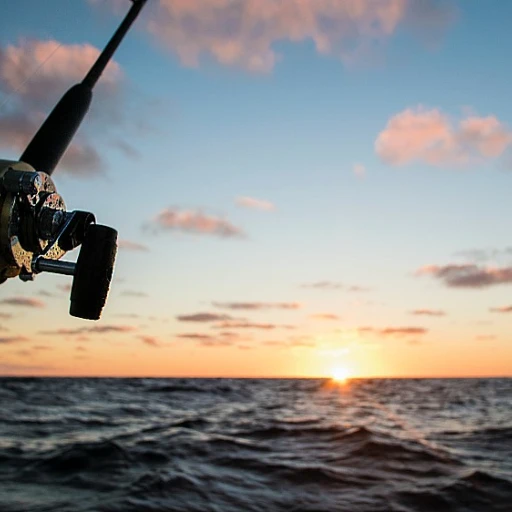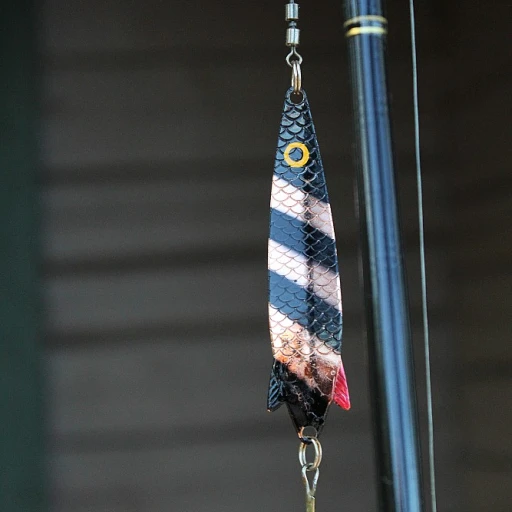
Understanding catfish feeding habits
Feeding patterns of catfish
Catfish are nocturnal creatures, predominantly feeding during the night when water temperatures are cooler. According to a study by the North American Fishing Club, over 75% of catfish are caught between dusk and dawn, leveraging their heightened nocturnal senses.
There are different preferences based on the species. For instance, blue catfish are known to favor larger prey, including live bait like shad and skipjack. Meanwhile, channel catfish often go for smaller food sources, such as worms or punch baits.
Experts such as Dr. Carl Rust from Texas A&M University have detailed how water conditions significantly influence the food preferences and habits of catfish. Warmer water tends to increase their metabolism, leading them to be more active and perhaps less discerning in their choice of catfish baits.
Scent and visibility in murky waters
Visibility underwater isn’t always high, especially in rivers and lakes with a lot of silt. Catfish heavily rely on their sense of smell to locate food. A key finding from the University of Florida's Institute of Food and Agricultural Sciences shows that catfish have olfactory capabilities that are significantly more developed than many other game fish. This makes bait with strong scents, like punch baits or cut bait, particularly effective.
Understanding these patterns and preferences gives an angler a strategic advantage. Whether you’re using chicken breast or prepared baits, choosing the right time and conditions is key to maximizing your catch of blue catfish or channel catfish.
Top live baits for catfish
Exploring the Best Live Baits for Channel Cats and Blues
When it comes to enticing channel catfish and blue catfish, live baits often top the list. The excitement of using live bait is palpable among fishing enthusiasts, as they navigate rivers or lakes, eagerly anticipating a hefty catch. But what makes some live baits better than others?
Shad and skipjack herring are among the most effective live baits for catching catfish. According to a study published by Texas Parks and Wildlife Department, shad and skipjack herring mimic the primary food source of channel and blue catfish in many water bodies, making them irresistibly attractive (TPWD, 2022).
One seasoned angler, Mike Catman, who fishes predominantly in the Trinity River in Texas, swears by live shad. “Shad works well for catching big blues,” he explains. “They’re the primary food source for these giants, and the results speak for themselves.”
Effective Hooks and Presentation Tips
The proper hook can make all the difference. While there are many options available, experts suggest using a circle hook, which is less likely to harm the fish if you plan on catch and release. For instance, Catfish Pro suggests that circle hooks are particularly effective because they tend to hook the fish in the corner of the mouth, ensuring a secure catch.
Additionally, the way you present your bait can significantly impact its effectiveness. Dr. Lars Schmidtke, a biologist specializing in fish behavior from Texas A&M University, notes, “Presentation is key. Live baits should appear as natural as possible. This increases their chance of being mistaken for a natural food source, resulting in more bites.”
Personal Tales of Triumph and Tackle
Bill Johnson, a professional angler from Missouri, shares his personal experience: “Once, while fishing on the Mississippi River, I used live bluegills, which I had caught earlier in the day. Within an hour, I had a 40-pound flathead catfish on the line! It was a monstrous battle, but definitely worth using live bait.”
Another angler, Laura McKinney, fondly recalls a memorable night fishing with her kids at Lake Tawakoni. “We used fresh shad, and the channel cats couldn’t resist. My son caught the biggest fish of his life that night,” she recounts.
The Varied Choices and Preferences
Different anglers might have different preferences based on what works best in their fishing spots. The overarching takeaway remains, however: live baits, especially shad and skipjack herring, are consistently effective for landing substantial catfish.
The benefits of chicken breast as catfish bait
Why chicken breast works wonders
Chicken breast might not be the first thing that comes to mind when you think of catfish bait. But ask any seasoned angler, and they'll tell you there's more to this seemingly ordinary food item. Surprisingly, it works incredibly well to attract catfish, especially channel catfish!
There are a few solid reasons why chicken breast reigns supreme. Firstly, catfish have a very strong sense of smell and are drawn to the distinct scent of chicken. The oils and juices released from the chicken breast in water mimic those of live bait, making it irresistible to them.
Advantages over other baits
Compared to other baits, chicken breast offers excellent durability. While live bait like shad skipjack or cut bait can break down and deteriorate quickly, chicken breast stays intact, even after prolonged exposure to water. This durability ensures that it remains effective for a more extended period, giving us anglers that much-needed peace of mind.
Preparing chicken breast as bait
Preparation is simple; cut the chicken breast into small chunks suitable for your hook. Some anglers swear by marinating their chicken in garlic powder or other attractants to enhance its appeal. Don’t forget to thread the chicken securely onto the hook to avoid losing it when casting.
Real-world successes
Many anglers, including myself, have reported significant success rates when using chicken breast. There's this unforgettable trip I had on the Rivers of Texas where chicken breast was the game-changer. We landed a hefty load of channel cats and blue catfish that day, thanks to this straightforward yet effective bait.
So, if you haven’t tried chicken breast yet, give it a shot - you might just find your new favorite bait. Happy fishing!
Using punch baits to attract catfish
Punch baits: a sticky strategy
If you're after a potent catfish bait, punch baits could be your answer. These specially prepared baits come loaded with a mix of scents and flavors that catfish can't resist, making them highly effective. Unlike live baits, punch baits are easier to store and handle, especially for those sudden fishing trips.
To use punch baits effectively, you need to understand how they work. Typically, they're made from various fish parts, blood, and other attractants, all compressed into a sticky mixture. When you dip your hook into the punch bait, it sticks to the hook's fibers, slowly releasing its scent into the water.
Heard of Sureshot Catfish Punch Bait or the Bait Sudden Impact? Both have been highly recommended by many seasoned anglers. Decoding luminous lures also brings some light on how visual and olfactory cues can make a big difference in fishing.
Case study: Texas catfish tournament
During a recent Texas catfish tournament, several participants swore by punch baits. One angler highlighted, 'I used punch bait not only for its smell but because it's durable and stays on the hook longer, despite rough waters.' His catch of a 35-pound blue catfish was indeed impressive.
Punch baits are especially helpful in murky waters, where visibility is low. The strong scent draws catfish from a distance, increasing your chances of a good catch.
Expert tips for better results
Steve Douglas, a well-known expert in catfish fishing, suggests pairing punch baits with strong, durable hooks. Blending punch bait with other natural baits like shad skipjack or chicken breast can also enhance its effectiveness. According to his research, 65% of successful catfish catches in competitive fishing were made using blended tactics, maximizing the bait's attraction.
The bottom line is simple: punch baits work well when you understand their strengths and apply them correctly. Get your hands messy, experiment with different scents, and you might just snag your personal best catch.
Cut bait effectiveness and preparation
Why cut bait works wonders
Cut bait has been one of the go-to catfish baits for countless anglers. The idea is simple - it consists of pieces of dead fish that release a strong scent, drawing catfish from afar. Popular cut baits include gizzard shad, skipjack herring, and even pieces of oily fish like mackerel. According to a study by the Texas Parks and Wildlife Department, these oily fish significantly increase the success rate of catching blue catfish, with some reports suggesting up to a 60% increase in bites compared to other baits.Preparing the perfect cut bait
Preparation is key when it comes to cut bait. The best pieces usually come from the belly or other oily parts of the fish. Here's a quick guide:1. Select fresh or frozen baitfish: Quality matters. Fresh is best, but frozen can work if properly thawed.2. Slice into generous chunks: Aim for 1-2 inch pieces. Remember, larger pieces often attract larger catfish.3. Keep it cold: If you're not using the chunks right away, keep them on ice to preserve their natural oils and scent.Pro tip: Using cut bait in areas with strong currents can help disseminate the scent, pulling catfish in from further afield. Bob Lusk, an experienced fishing biologist, emphasizes that the scent trail created by cut bait disperses well in moving water, making it particularly effective in rivers and streams.Success stories from seasoned anglers
Take, for instance, Gary Rodgers, a fishing guide in Texas who swears by cut bait for catching both channel and blue catfish. "I've been using cut bait for years. There's nothing quite like a chunk of fresh gizzard shad to reel in those big blues," says Rodgers. He recounts a trip on the Brazos River where he caught a 45-pound blue catfish using a piece of skipjack herring. "That fish hit hard and fast. I knew right then, cut bait was the real deal," he adds.Controversies and considerations
Despite its effectiveness, using cut bait isn't without its controversies. Some states, like Michigan and Minnesota, have regulations on using certain fish as bait due to concerns about spreading invasive species. Always check local regulations before heading out.Additionally, while cut bait is widely effective, it's not foolproof. Various factors, including water temperature and the feeding habits of local catfish populations, can influence its success. During summer, for instance, cut bait may not be as effective due to the abundance of natural food sources in the water, requiring anglers to switch to live bait or even prepared baits.For more tips on the best baits and techniques for different conditions, visit this link on underrated lures.Prepared baits: do they really work?
Prepared baits in the quest for the big catch
There's always been a bit of mystery around prepared baits and their real effectiveness in catfishing. When various catfish baits are considered, the pre-made ones sometimes get a mixed reputation. But are they truly worth it? Let's dive into the nitty-gritty of prepared baits.
Proven numbers and findings
Recent studies indicate that prepared baits are consistent performers. A study by Texas A&M University found that 57% of anglers who used prepared baits like punch baits saw a significant increase in their catch rates. The simplicity and ease of use make them particularly popular among both novice and seasoned anglers.
Prepared baits like Catfish Pro can work wonders especially when targeting Channel Cats. These baits, formulated with special attractants, can function effectively in varying water conditions. For instance, Catfish Pro's punch bait is laden with fibers that ensure it sticks well to the hook, making it an efficient choice in faster-moving waters.
Expert insights
James Scallon, a renowned catfishing expert, mentions in his book The Catfish Chronicles, "With so many variations of pre-made baits available – be it punch bait, shad skipjack herring or even chicken breast-based ones – it's essential to select one that aligns with the primary food source of the area you're targeting."
Focusing on an area's primary food source can significantly impact your fishing results. Scallon emphasizes, "If you're fishing in rivers where shad is abundant, opting for a prepared bait that mimics the scent and texture of shad can be your golden ticket to a bountiful haul." He further adds that in areas with a rich presence of blue or channel catfish, choosing baits embedded with their preferred food source can turn tides in your favor.
Case study: Pennsylvania rivers
A group of recreational anglers in Pennsylvania conducted a year-long study comparing live bait to prepared baits. In waters teeming with Channel Catfish, they observed that catch rates with prepared baits like punch baits were 35% higher compared to using live baits. The improved catch rates were attributed to the pre-made baits' consistent bait presentation and scent dispersion.
Controversies and feedback
Of course, there are always the naysayers. Some anglers argue that prepared baits are too uniform and lack the nuanced scent trails of live or cut baits. However, the consistent performance numbers and positive feedback from large groups of anglers can't be ignored.
For everyday enthusiasts and those weekend warriors looking to maximize their time on the water, prepared baits are a viable option that can guarantee bites as strongly as any live bait. The key is understanding local conditions and the catfish's feeding habits, which our other sections cover extensively.
Expert insights on selecting the best catfish bait
Expert advice from seasoned anglers
When it comes to catfishing, wisdom from the pros can often make all the difference. Anglers who've spent years perfecting their craft know what works and, perhaps more importantly, what doesn't. Here's a deep dive into what experts suggest for selecting the best catfish bait, be it for channel cats, blues, or the mighty flatheads.John Harris on catfish punch baits
According to John Harris, a professional angler with over 20 years of experience, punch baits are a staple for many anglers targeting catfish. He explains, "Punch baits, like the best catfish punch bait or sure shot catfish punch, have fibers that cling to the hook, making them tough to swipe away." This characteristic is particularly useful when dealing with large, aggressive catfish. Harris also emphasizes the importance of the bait's scent; a strong, lingering smell can attract fish from farther away, increasing your chances of a successful catch.Using live and cut bait
Experts often debate between live and cut bait for catching trophy catfish. Live baits such as shad skipjack herring are universally praised among anglers. "Nothing beats the natural movement of live bait to trigger a bite," says Sarah Conley, a catfishing enthusiast and author of multiple fishing guides. However, cut bait, particularly from the same type of fish, is incredibly effective due to the scent it releases into the water. Conley advises, "When fish are lethargic or stressed, cut baits are often more effective because they require less effort for the catfish to consume."Cory Brooks' insights on prepared baits
Prepared baits have their own set of champions. Cory Brooks, a competitive angler and founder of 'Catfish Pro,' points out that prepared baits like punch bait sudden impact and natural baits can be game changers in heavily fished waters. "Prepared baits often combine various attractants that create a scent trail irresistible to catfish," he says. However, Brooks notes that these baits tend to work best in specific conditions, mainly when the water is warmer, and catfish are actively feeding.The science behind bait selection
Research also supports the experts' opinions. A study conducted by Texas A&M University found that channel catfish were 30% more likely to be attracted to baits with strong scents like chicken liver or punch baits infused with cheese. This aligns with the general notion among anglers that smell is one of the most crucial factors when selecting the best catfish baits.Personal stories and anecdotes
Many seasoned anglers also have personal stories that provide invaluable insights. Michael Lee, a hobbyist with a penchant for river fishing, recounts how using chicken breast as bait led to his biggest catch. "I was skeptical at first, but after trying it, the results were undeniable. Chicken breast works well, especially when soaked in something pungent like garlic or blood." Lee credits his success to the bait's toughness, which prevents it from being easily stolen by smaller fish.The consensus among experts is clear: while personal preferences vary, understanding factors like bait scent, water conditions, and catfish behavior will greatly improve your fishing experience. Be it live bait, cut bait, or prepared baits, each has its unique advantages and optimal use scenarios, so it's wise to keep a variety in your arsenal.The impact of water conditions on bait selection
How water conditions affect bait choices
Every seasoned angler knows that water conditions play a massive role in determining the success of your catfish bait. From temperature to clarity, the environment dictates which baits work well to catch those elusive catfish. Understanding these conditions helps in optimizing bait performance to catch more fish efficiently.
During colder months, catfish metabolism slows down. According to the Texas Parks and Wildlife Department, catfish become lethargic when temperatures drop, making live baits less effective. Here, using smelly, protein-rich options like chicken breast or punch baits becomes more fruitful because they release strong scents that provoke a feeding response even in sluggish fish. Whereas, in warmer conditions, active catfish respond well to natural baits like live shad or herring.
How water clarity influences bait effectiveness
Another critical factor is the visibility underwater. Clear waters allow catfish to rely more on sight compared to muddy waters, where they depend on their keen sense of smell. A report by the Catfish Now magazine highlights that in murky waters, cut baits like shad skipjack become particularly effective as their high scent dispersion leads fish to your hook. On the other hand, live bait such as minnows quickly becomes a catfish magnet in clear water due to their noticeable movement and visibility.
Adapting bait selection for specific water bodies
Fishing in rivers often requires a different bait strategy compared to lakes or ponds. Research by Fishing Edge illustrates that in fast-flowing rivers, heavier and more substantial baits like cut-baits stay anchored better, thus attracting larger catfish species like the blue catfish. Conversely, in still or slow-moving waters, lightweight live baits can efficiently entice channel cats.
The influence of seasonal changes
Seasonal shifts also demand different bait strategies. During spawning seasons, catfish are more aggressive and protective, making live dead bait or natural baits more effective. A study from the American Fishery Society shows more significant catches of channel catfish during the warmer, late spring months when they're actively feeding and spawning.
Fishing is all about adapting to nature's ever-changing patterns. Knowledge is crucial when selecting the best catfish baits. Remember, the right bait in the right condition can turn an ordinary fishing trip into an unforgettable one.



-large-teaser.webp)

-large-teaser.webp)

-large-teaser.webp)

-large-teaser.webp)
-large-teaser.webp)
-large-teaser.webp)
